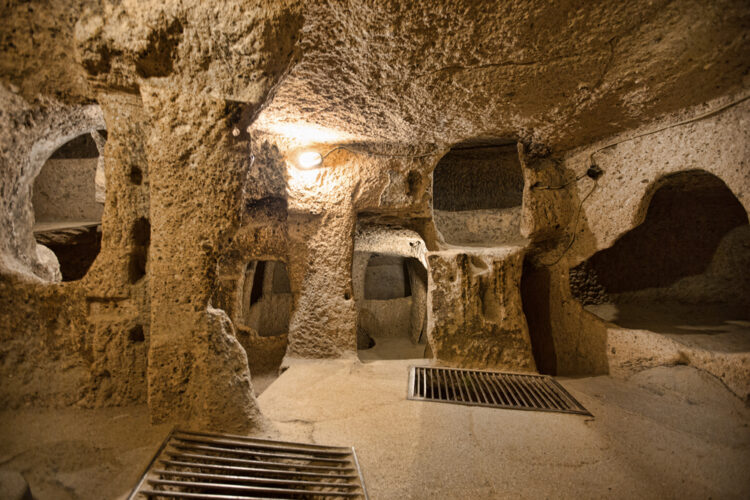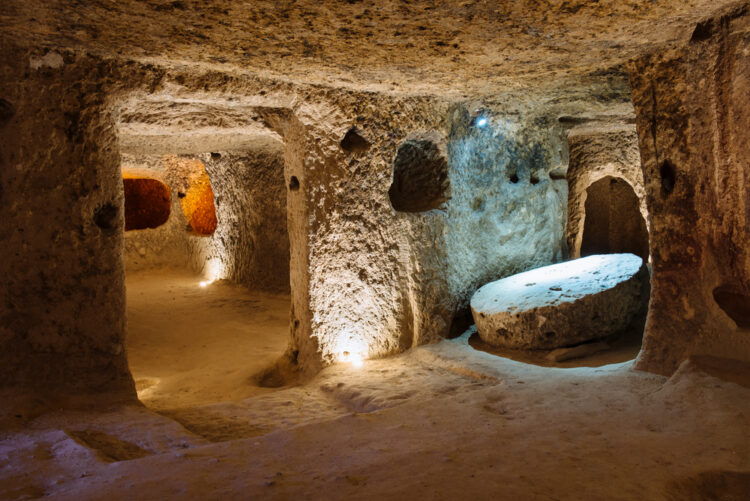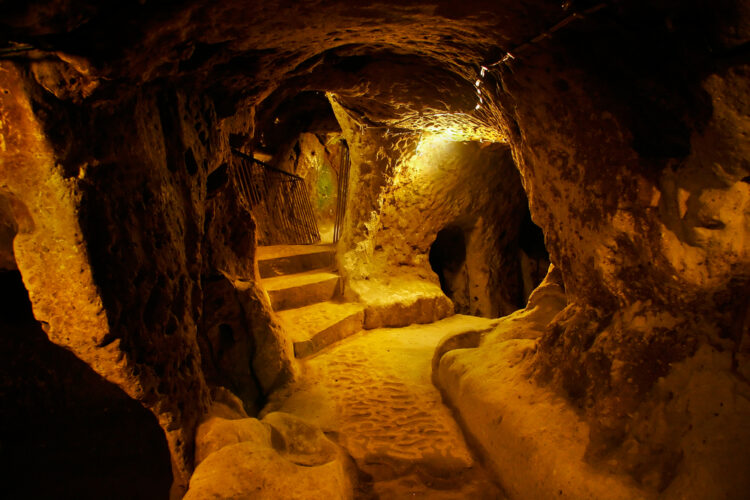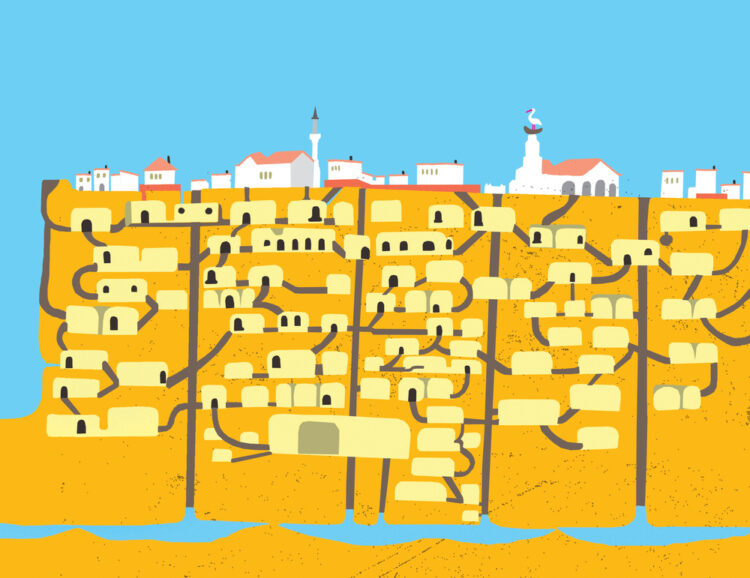Cappadocia is a historic district that lies north of the Taurus Mountains, at the heart of Turkey. It is renowned for its awe-inspiring scenery, characterized by expansive soft volcanic rock formations molded by erosion into cones, valleys, towers, and caves.
In 1963, a local resident stumbled upon a hidden entrance in his home when he uncovered a passageway that led to a labyrinth of underground chambers, including dwellings, storage rooms, stables, schools, wineries, and even a chapel. More than 600 entrances were discovered, leading to other private homes, revealing an entire underground city labyrinth hidden beneath the surface.

It is worth noting that the discovery of Derinkuyu was not entirely surprising to much of the local population, as the region had long been known for its underground structures. The people of Cappadocia have been utilizing subterranean spaces for storage, shelter, and religious purposes for thousands of years, and many locals were already aware of portions of the underground city.
The excavation of Derinkuyu began immediately. In 1985, this remarkable cave city was given the recognition it deserves as a UNESCO World Heritage site. This mysterious subterranean complex, which extends more than 60 meters below the surface, consists of an intricate network of tunnels, ventilation shafts, and living spaces, Derinkuyu offers a fascinating glimpse into the lives of the people who inhabited this underground metropolis throughout history.
The history of Derinkuyu dates back to the 8th century BCE, when the Phrygians, an Indo-European people, are believed to have first carved out the underground city. However, it was not until the Byzantine era (4th to 11th centuries CE) that the city population peaked, with evidence suggesting that it could have housed up to 20,000 people.

The primary reason for the construction of Derinkuyu was to provide a safe haven for the local population during invasion or conflict. The underground city was designed to be self-sufficient, with living quarters, kitchens, storage rooms, wine cellars, stables, and even places of worship. Large stone doors, weighing up to half a ton, could be rolled into place to seal off the tunnels, providing an additional layer of protection for the inhabitants.
Derinkuyu’s extensive network of ventilation shafts ensured that fresh air was circulated throughout the city, even when the entrances were closed. These shafts also served as wells, providing a vital water source for the city’s inhabitants.
The ancient Phrygians are believed to have been the first to carve out the subterranean city of Derinkuyu. The region of Cappadocia, where Derinkuyu is located, is known for its unique geological formations, characterized by soft volcanic rock known as tuff. This rock was formed by the solidification of volcanic ash and is relatively easy to carve, making it an ideal building material for the construction of an underground city.

The people responsible for the construction and expansion of Derinkuyu were skilled engineers and craftsmen who not only understood the properties of the local rock but also demonstrated a keen understanding of structural engineering and ventilation principles.
Given both the vastness of Derinkuyu and the history of the region, other undiscovered underground cities may be waiting to be found in the Cappadocia region. Over 200 underground settlements have been identified in the area, though not all are as extensive or well-preserved as Derinkuyu.
The discovery of these underground cities has prompted further exploration and research into the subterranean world of Cappadocia. Archaeologists and historians continue to investigate the region, hoping to uncover new evidence to help piece together the story of these enigmatic underground dwellings.


